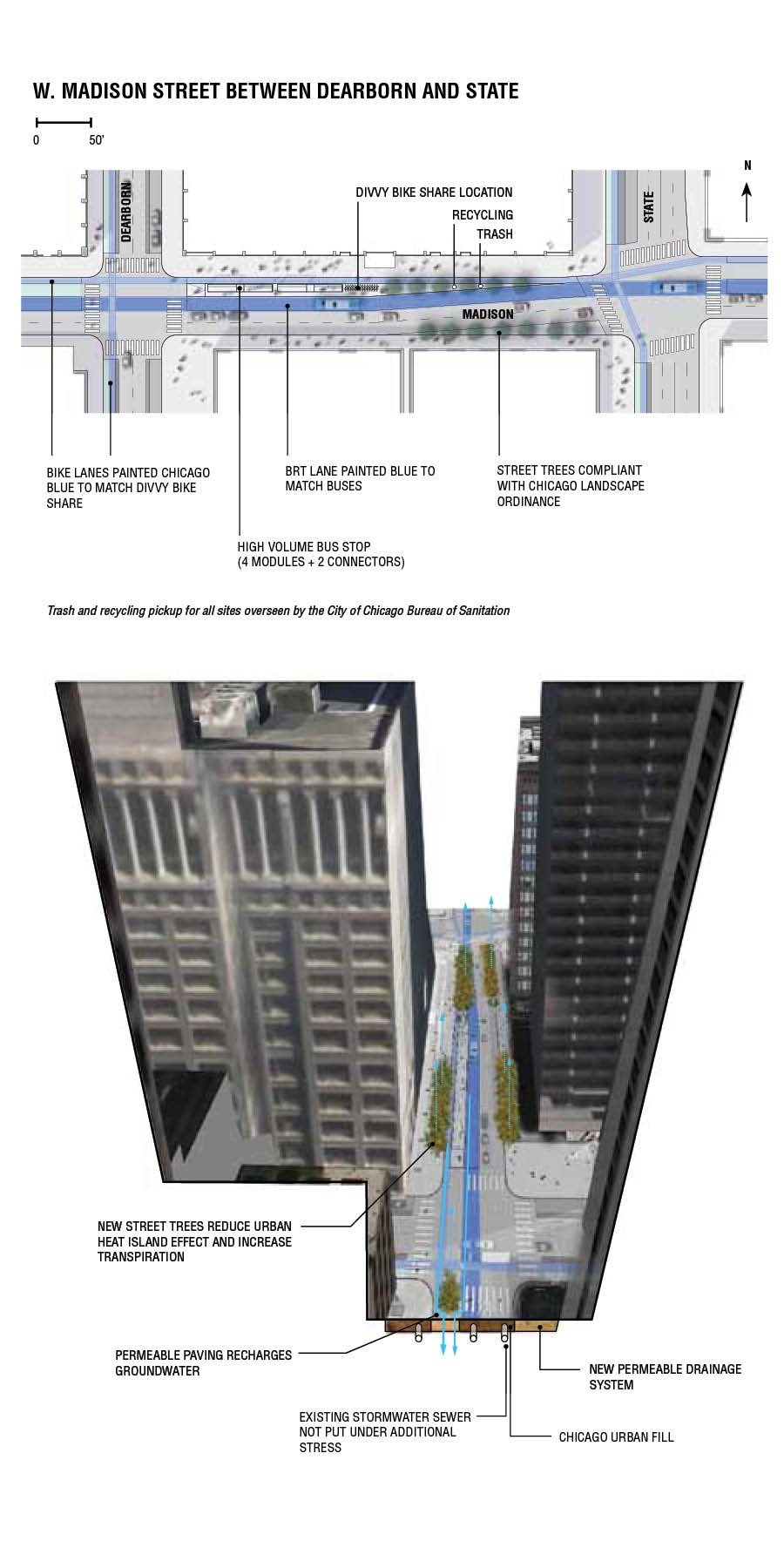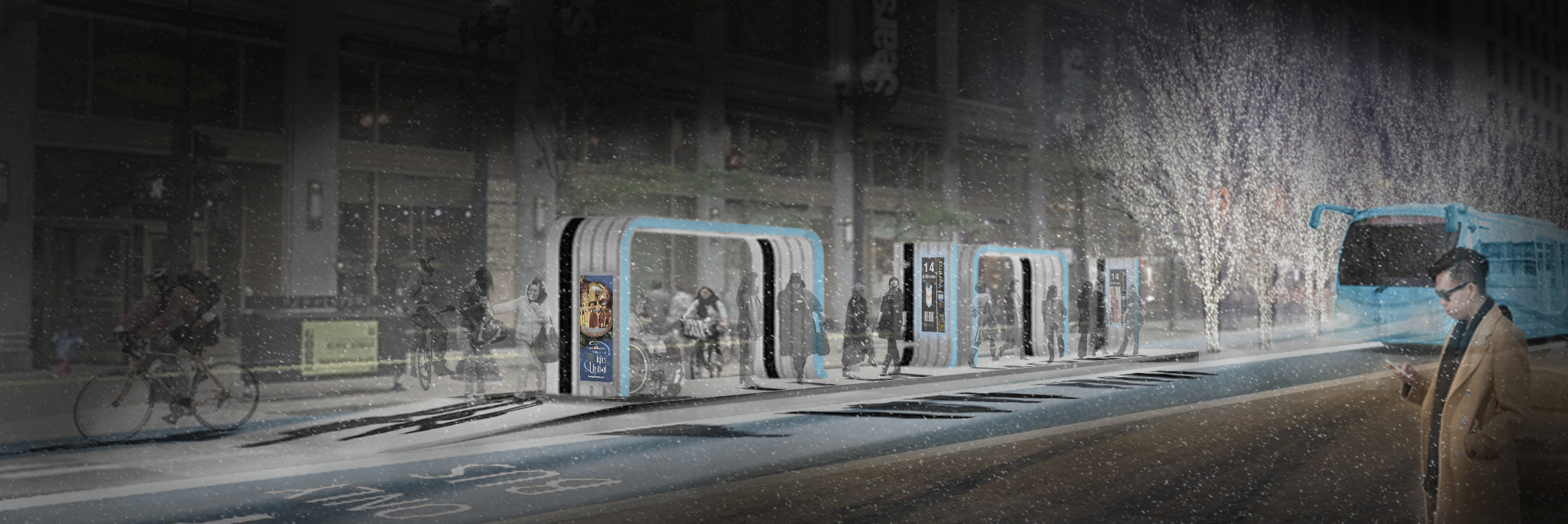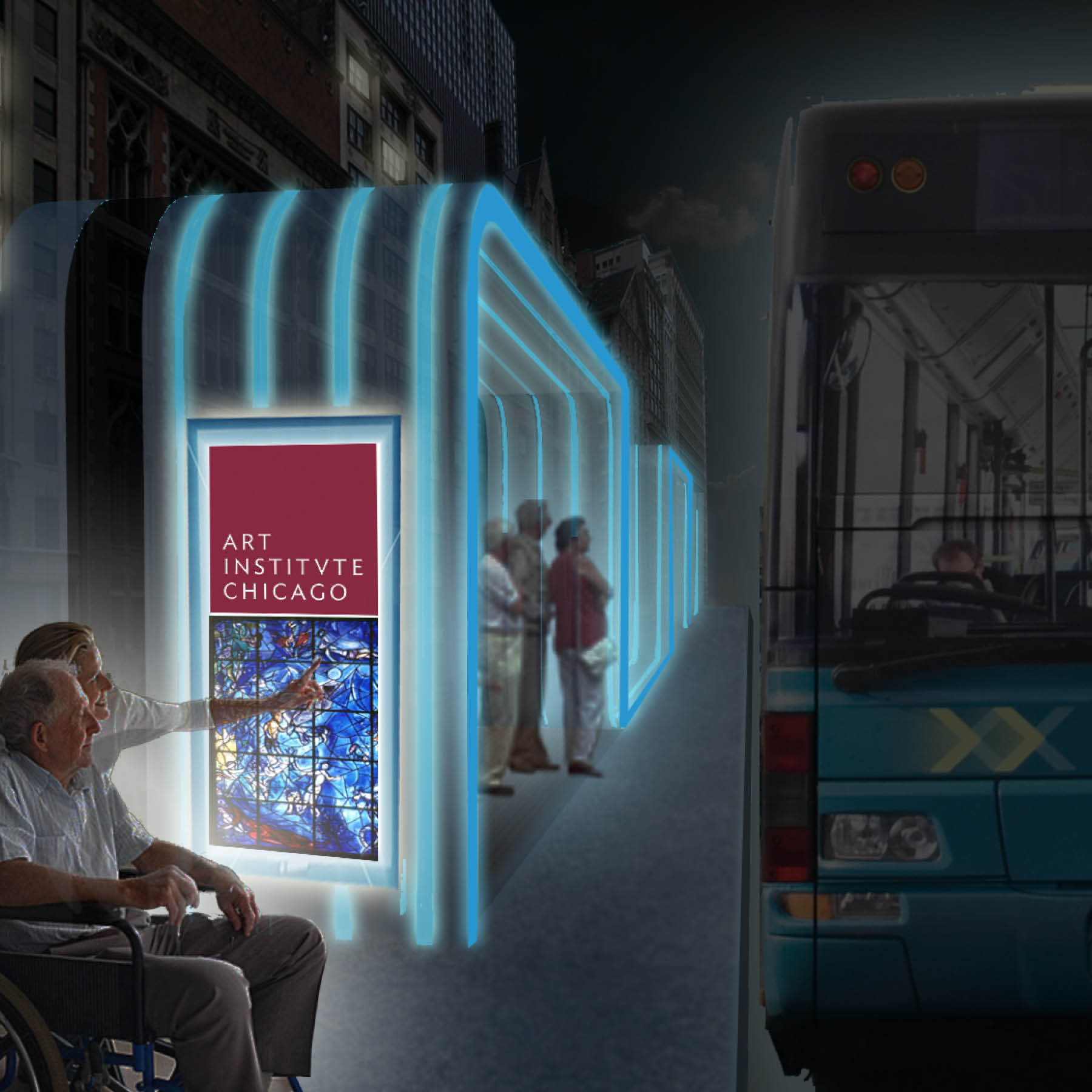Bus Transit Authority
Year: 2013
Competition Entry: 2013 Burnham Prize Next Stop: Designing Chicago's BRT Stations
Team: Aneesha Dharwadker, Conor O'Shea
Recognition: Third Place
BTA is an architecturally nimble bus rapid transit strategy designed to evolve with Chicago's dynamic urban ecosystem. It is a multiscalar flexible framework plan operating at the metropolitan scale, the neighborhood scale, and manifested architecturally using modular units that can be deployed as local conditions demand.
Perhaps more than any other American city, Chicago’s physical fabric is the physical manifestation of over 200 years of evolving transportation infrastructure. From the freight railroads that fed the Union Stock Yards, to the electric interurbans ferrying regional commuters in and out of the Loop, to the interstate highway system that helped catalyze the greater metropolitan area, and not least, the “L,” Chicago’s economy has always relied on a historically-specific mode of transportation to move goods and people.
Today, as Chicago’s economy continues to shift from its previous manufacturing base towards one engaged in services it requires an new attendant mode of transportation infrastructure to serve new socioeconomic currents. However, given uncertain fluctuating market forces and rapidly shifting local economies, large-scale investments like fixed rail is risky and expensive.
Bus rapid transit, Chicago’s contemporary transit vision for its 21st century identity, must not only relieve the ever popular CTA train and bus routes, but should also play an active role in strengthening and creating new connections among existing and emerging recreational, environmental, and social systems in the city.
BTA’s modular architectural bus stops, aimed at not only at commuters, but at students, retirees, and tourists, weave together the following three networks of Chicago’s urban ecosystem by merging ecology and technology with a resilient architectural strategy:
1. EDUCATION AND TOURISM NETWORK
2. TRANSPORTATION NETWORK
3. OPEN SPACE AND HYDROLOGICAL NETWORK











